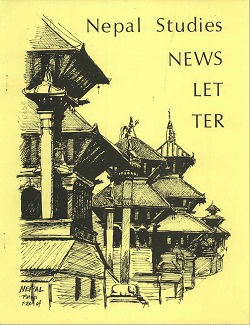Author Biography
Austin Lord is a PhD Student in the Department of Anthropology at Cornell University. His research in Nepal focuses on the social, economic, and environmental effects of infrastructure development, the formation of infrastructural publics and imaginaries, and perceptions of risk and uncertainty. His current project analyzes the reconfiguration of imagined futures and economies of anticipation in the wake of the 2015 earthquakes. Austin holds a Master of Environmental Science from Yale University and a B.A. in Economics from Dartmouth College. A portfolio of his visual work focused on Nepal can be found at www.austinlord.com.
Galen Murton is an Assistant Professor in the Department of Integrated Science and Technology at James Madison University with teaching responsibilities in the Geographic Sciences Program. He completed his PhD in the Department of Geography at the University of Colorado Boulder (2017). His dissertation examined the social and geopolitical impacts of infrastructure projects in High Asia with a focus on road developments between China and Nepal. His next project, Road Diplomacy: China in South Asia, is supported by a Marie S. Curie Action Individual Fellowship based at Ludwig Maximilian University Munich in 2018-19.
Abstract
In this article, we reflect on the multiple nature of our engagements in the wake of the 7.8m earthquake that struck Nepal on April 25th 2015. Specifically, we trace the events, experiences, decisions, positions, and processes that constituted our work with a post-earthquake volunteer initiative we helped to form, called Rasuwa Relief. Using the concept of multiplicity (cf. Mol 2002), we consider the uncertain process by which Rasuwa Relief began to cohere, as a collective of diverse efforts, interventions, projects, and commitments, and how Rasuwa Relief was continually and multiply enacted through practices of engagement. As a collaborative effort that coordinated and consolidated many of our post-earthquake interventions over a period of two years, Rasuwa Relief was always in a state of becoming. This process of becoming, we suggest, indexed and informed the multiple ways that we participated and intervened in the aftermath of the earthquake—as accidental humanitarians or ‘relief workers’, as early-career scholars, and as people attempting to balance diverse personal, academic, and ethical commitments within and beyond Nepal. Based on a reflexive analysis of these multiple engagements, we also present an embedded critique of ‘humanitarian reason’ (Fassin 2012), inclusive of our own decisions and actions, alongside a selfcritical analysis of the affective factors that shaped our own ‘need to help’ (Malkki 2015).
Acknowledgements
The authors would like to express their sincere gratitude to all those who contributed to and supported the work of Rasuwa Relief. First and foremost, we would like to acknowledge our founding team members at Rasuwa Relief: Bob Beazley, Bikram Karki, Sneha Moktan, Arya Gautam, Prasiit Sthapit, Upasana Khadka, and Lakpa Sherpa. This is an incredible group of people who volunteered hundreds of hours, and made Rasuwa Relief possible. As our efforts evolved, many others joined our team and made important contributions, particularly Nathaniel and Amanda Needham, Jennifer Bradley, Rabi Thapa, Johanna Fricke, and Prakriti Yonzon. Our work with Rasuwa Relief prompted many meaningful collaborations with a variety of different individuals and institutions. While there are perhaps too many to name, we would like to thank DROKPA, Mojgone Azemun and Avaaz.org, Bodhi Garrett and Craig Lovell of WeHelpNepal, Temba Lama and all the members of the Langtang Management & Reconstruction Committee, NayanTara Kakshyapati Gurung and the Himalayan Disaster Relief Volunteer Group, Amchi Tenjing Bista and the Lo Kunphen School, Brigid McAuliffe and Patti Bonnet of PictureMeHere, Bob Chapman with Friends of Nepal, Jake Norton, Tim Gocher of The Dolma Fund, Jonas and Elsa Haeberle at OM Nepal, Pasang Bhutti, Bob and Vera Bonnet, Liesl Clark, Steve Marolt and Aspect Solar, Amuda Mishra at the Ujyaalo Foundation, the team at Semantic Creations, Rajeev Goyal at Phulmaaya Foundation, Bimal Karki, Ben Ayers, Tracy Joosten, Rachelle Brown and Diane Schumacher, Mahohari Upadhyaya, KP Kafle and SEEDS Nepal, Robert Soden, Lauren Gawne and Ningmar Dongba, and Roshi Joan Halifax. The authors are also deeply grateful for the counsel and friendship of senior academic colleagues. This includes, but is not limited to, Sienna Craig, Ken Bauer, Kathryn March, Emily Yeh, Geoff Childs, Carole McGranahan, Heather Hindman, Sara Shneiderman, and Mark Turin, whose advice and leadership was extremely valuable during a challenging and uncertain period. We would also like to thank the Editors of HIMALAYA, Marina Welker, Drew Zackary, and the two anonymous reviewers for critical feedback that deepened our reflections and contributed to a better understanding of our own multiple engagements. Financial support for our research in the months prior to the earthquakes was provided by the Fulbright U.S. Student Program and the U.S. Department of Education Fulbright Hays Program, respectively. Austin Lord’s post-earthquake research in Nepal has also been supported by a U.S. Department of State Area Studies Foreign Language & Area Studies Fellowship. Galen Murton’s research in Nepal was funded by the Social Science Research Council as well as the Department of Geography and the Natural Hazards Center at the University of Colorado Boulder. Austin would like to express heartfelt appreciation to his family members in Nepal, who supported us in innumerable ways throughout this entire process, particularly Roop Sagar Moktan and Deepanjali Moktan. He especially thanks his wife, fellow Rasuwa Relief co-founder and permanent counsel, Sneha Moktan, for her love, patience, and support, without which none of this work would have been possible. Finally, and most importantly, the authors thank the many people in Rasuwa who provided assistance, input, and guidance; who taught them about the earthquakes and their aftermath, the complexities of the recovery process, and the lived experience of vulnerability through everyday acts of struggle and strength.
Creative Commons License

This work is licensed under a Creative Commons Attribution-Noncommercial-No Derivative Works 4.0 License.
Recommended Citation
Lord, Austin and Murton, Galen. 2017. Becoming Rasuwa Relief: Practices of Multiple Engagement in Post-Earthquake Nepal. HIMALAYA 37(2).
Available at:
https://digitalcommons.macalester.edu/himalaya/vol37/iss2/12


